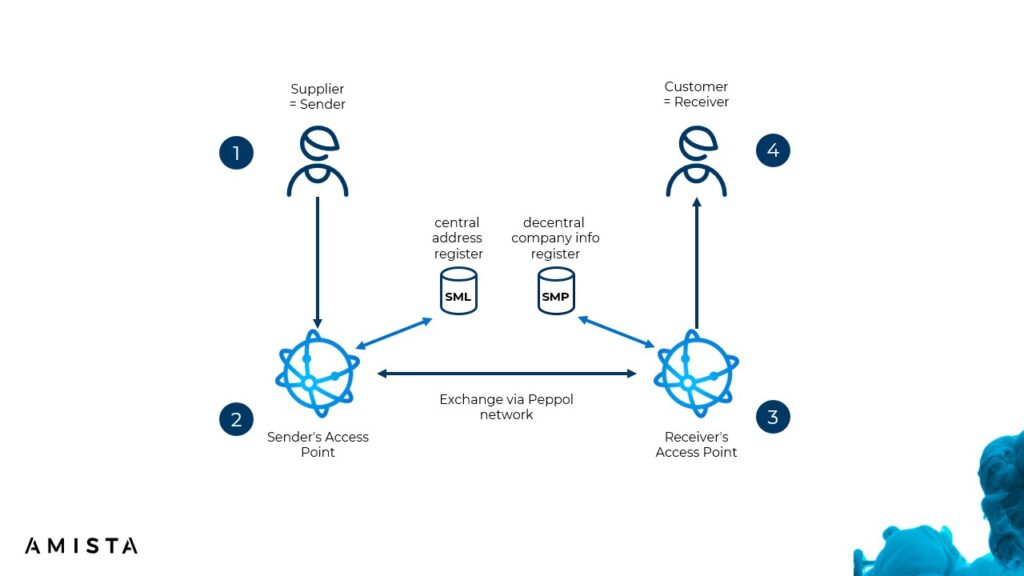The 7 most frequently asked questions about Peppol answered

The 7 most frequently asked questions about Peppol answered
1. What is Peppol?
The name Peppol stands for Pan-European Public Procurement On-Line and started as a European initiative to simplify digital procurement across borders.
Today, it has grown into a global solution for document exchange between companies and governments.
Peppol consists of 3 components:
- An open and secure document exchange network, currently in use in 41 countries.
- The standardised format and rules for the documents (in UBL format)
- The legal aspects for the management and use of the network by administrators and users.
2. Is Peppol the same as EDI?
Both Peppol and EDI are technologies to exchange documents digitally between organisations and companies, but they are not exactly the same.
EDI means Electronic Data Interchange and has been around for decades to exchange documents without human intervention.
So you may actually think of EDI as a group name under which fall a lot of different formats and various networks.
Peppol can then be regarded as a kind of EDI, but there are still two important differences between Peppol and the classic EDI solutions:
- EDI often uses a private network where sender and receiver are directly linked or both exchange messages through the same network partner. In the case of Peppol, the network is open and you choose your own transport partner.
- There are lots of different EDI formats and networks available and often you have to combine several to connect with all your customers or suppliers. In the case of Peppol, there is 1 standard and 1 network.
3. How do I use Peppol?
Broadly speaking, you go through 3 steps:
- Select a Peppol partner who will register your company on the Peppol network. Amista does this in cooperation with Billit, certified Peppol Access Point and also the largest Peppol party in Belgium.
- Map your business software: which systems are used to send out and receive invoices. Do these systems support the Peppol format by default or does a translation need to be done to convert the internal invoice format to Peppol format or vice versa?
- Agree with your suppliers and customers which invoice information needs to be explicitly mentioned: think of purchase order numbers, references, extra attachments, etc.
When choosing your partner, take into account the 3 steps above: some parties only act as transporters. Amista guides you not only with the transport, but also with the format, validations, checks and approvals.
4. How is an invoice exchanged via Peppol?
In technical terms, this is called the 4-corner model:
- The sender creates an invoice according to the Peppol standard and delivers it to his Peppol partner (= Peppol access point of the sender)
- The sender’s Peppol partner checks whether the recipient is also registered on Peppol network and sends out the invoice.
- The Peppol partner of the recipient receives the invoice
- and delivers the invoice to the recipient. Once the recipient has processed the invoice, the recipient can send feedback back via the Peppol network.

5. Is Peppol mandatory to use in Belgium?
When invoicing to the government, you are required to provide electronic invoices in Belgium. The Flemish government has required this since 2017.
In the first proposal, the obligation for B2B would be introduced from July 2024 for larger companies and in later phases for all companies.
Due to the late approval, the deadline has been pushed back. The new implementation date is January 1, 2026
For detailed information, please refer to this blog article: Blog: E-invoicing mandatory in Belgium
6. What are the benefits of Peppol?
- Reduce fraud: only after registering on the network can companies send or receive invoices. As a result, far fewer fraudulent invoices will be sent. The exchange takes place via advanced security protocols so that interception of documents is virtually impossible.
- Fast transfer: the exchange is almost as fast as an e-mail. But the recipient can use Peppol to provide feedback of receipt, approval and even payment in a structured manner.
- Fewer errors: paper or PDF invoices always require interpretation or extraction of the information (manually or via specialised software). Thanks to the structured format of a Peppol invoice, the invoice data can be read by the software without any doubt (about formats of dates, amounts, etc.) and without human intervention. So less chance of errors.
- International use: the standard in Europe but also beyond, allowing you to exchange invoices across borders.
- More efficient processing: not only will the recipient process your invoice faster and thus be able to pay it. You can also easily follow up on the current status thanks to receipt confirmations and status feedback.
7. How much does Peppol cost?
The price is largely determined by 2 aspects: what functionality do you need and how many documents do you want to send or receive?
The cheapest solutions only offer transport via Peppol without additional services such as mapping from/to Peppol format, validation of the message content, fallback via email if the customer is not available via Peppol, feedback messages, …
Overall, you can say that there is a one-off start-up cost to link your organisation and your systems with Peppol. In addition, you have a transaction cost for sending or receiving each message via Peppol.
Amista applies a degressive pricing model: as the number of invoices increases, the transaction cost decreases. If you want more information on pricing, feel free to get in touch.
